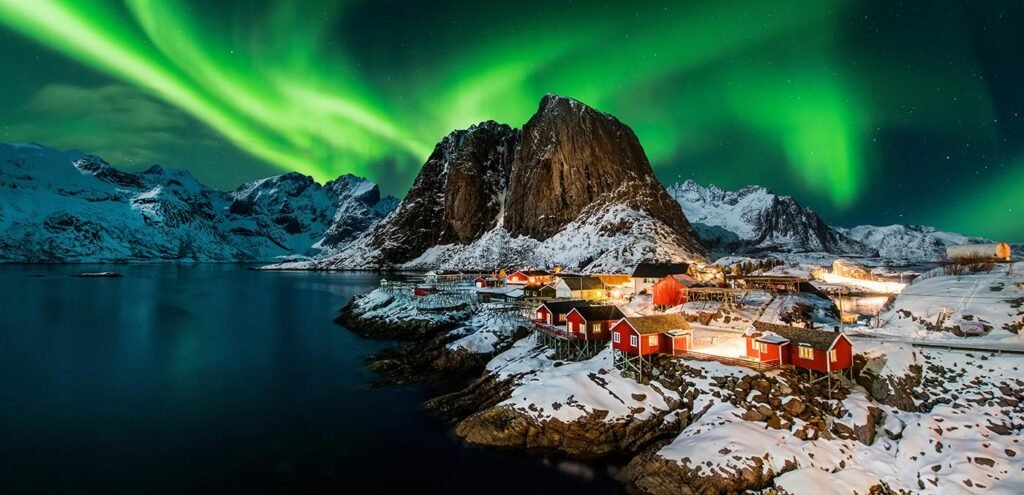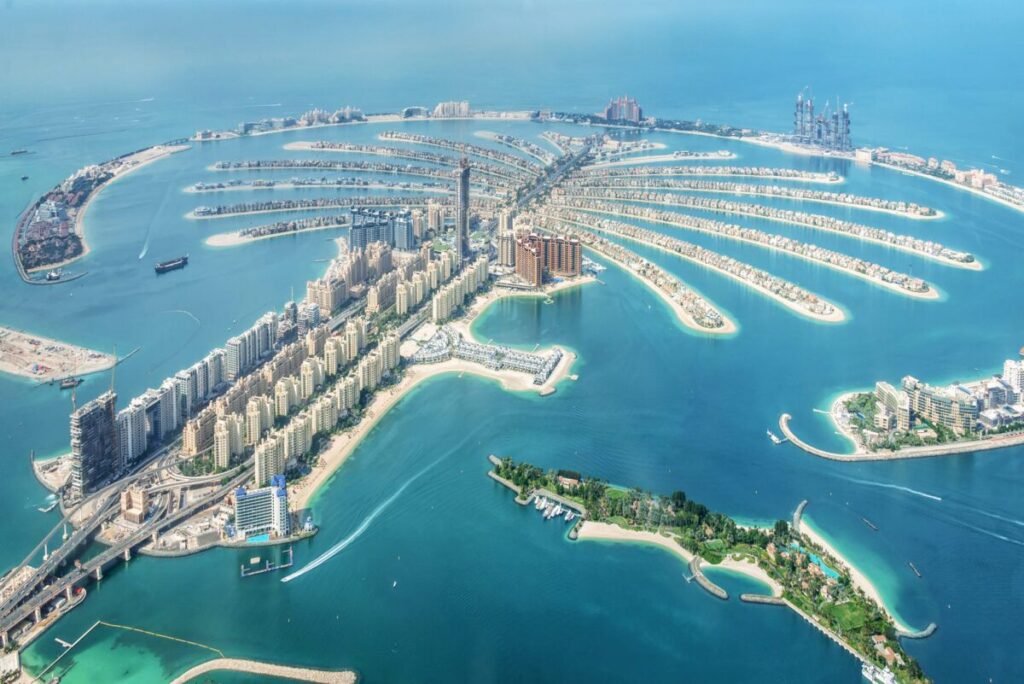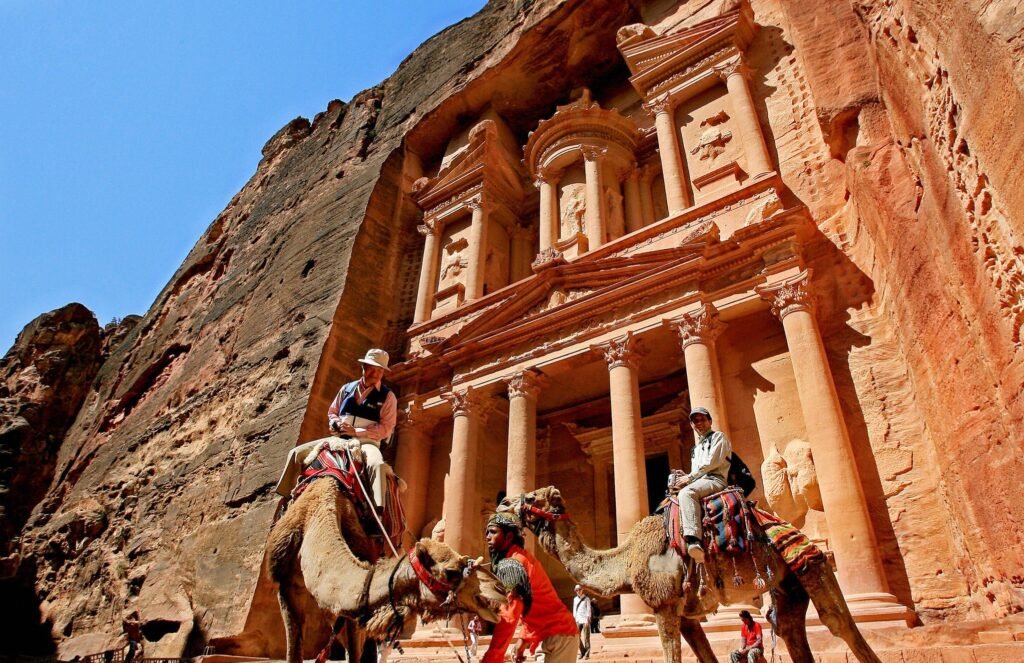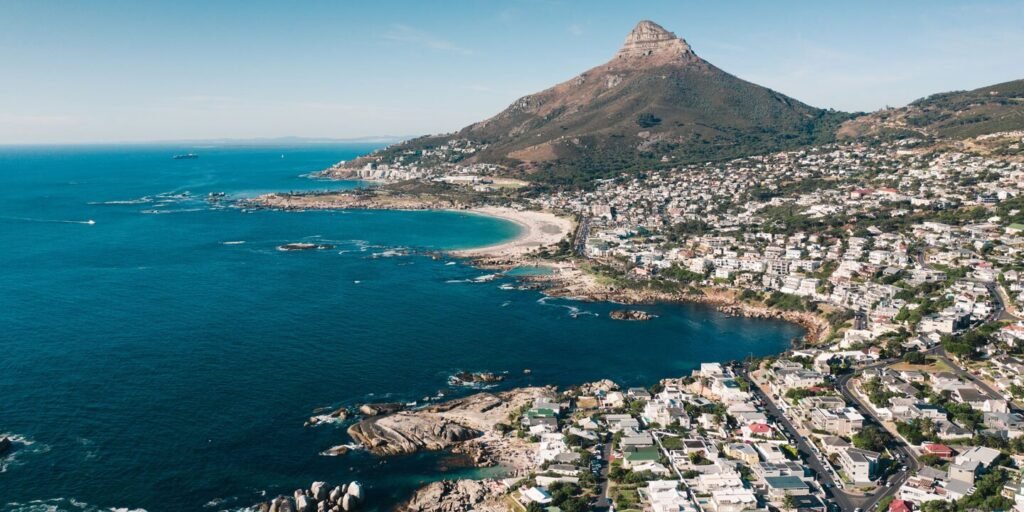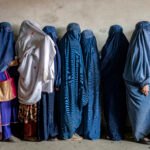Explore Norway: A Nordic Wonderland of Natural Beauty and Innovation
Introduction:
Norway, officially known as the Kingdom of Norway, is a Nordic country in Northern Europe, occupying the western portion of the Scandinavian Peninsula. It shares borders with Sweden, Finland, and Russia, and has an extensive coastline along the North Atlantic Ocean. The capital city is Oslo, known for its green spaces and museums.
Norway is renowned for its stunning natural landscapes, including fjords, mountains, and coastal archipelagos. The country experiences a variety of climates, from coastal temperate to arctic in the far north. The phenomena of the Midnight Sun and Northern Lights attract many visitors each year.
Economically, Norway is one of the wealthiest countries in the world, with a high standard of living and a comprehensive welfare system. The Norwegian krone (NOK) is the official currency. The economy is driven by natural resources, including oil, natural gas, and seafood, as well as advanced industries and technology.
Culturally, Norway has a rich heritage influenced by its Viking history, folk traditions, and contributions to art and literature. Norwegian culture values egalitarianism, nature, and outdoor activities. Norwegian is the official language, and the country is known for its robust educational system and high literacy rates.
Politically, Norway is a constitutional monarchy with a parliamentary system. King Harald V is the current monarch, and the Prime Minister is Jonas Gahr Støre. Norway is a member of various international organizations, including the United Nations, NATO, and the European Free Trade Association.
Tourism in Norway is a major industry, with attractions such as the fjords, the Lofoten Islands, the Northern Lights, and historical sites like the Viking Ship Museum. The country’s natural beauty, vibrant culture, and innovative spirit make it a top destination for travelers.
110 Facts About Norway (2024)
Basic Information
| Category | Details |
|---|---|
| 1. Current Name | Norway |
| 2. National Name | Kongeriket Norge (Bokmål), Kongeriket Noreg (Nynorsk) |
| 3. Former Names | None |
| 4. Date of Establishment | June 7, 1905 |
| 5. Date of Independence | June 7, 1905 (from Sweden) |
| 6. Leadership | King: Harald V, Prime Minister: Jonas Gahr Støre |
| 7. Government Type | Constitutional monarchy |
Geography
| Category | Details |
|---|---|
| 8. Capital City | Oslo |
| 9. Important Cities | Bergen, Trondheim, Stavanger, Tromsø |
| 10. Land Area | 385,207 square kilometers |
| 11. Total Area | 385,207 square kilometers |
| 12. Neighboring Countries (Land) | Sweden, Finland, Russia |
| 13. Neighboring Countries (Sea) | Denmark (across the Skagerrak) |
| 14. UNESCO World Heritage Sites | Bryggen in Bergen, Urnes Stave Church, Rjukan-Notodden Industrial Heritage (8 sites) |
| 15. UNESCO World Natural Sites | West Norwegian Fjords, Geirangerfjord, Nærøyfjord |
| 16. Climate | Temperate along the coast, cold winters and warm summers inland, arctic in the far north |
| 17. Biodiversity | Rich in marine life, reindeer, Arctic fox, lynx |
| 18. Famous River | Glomma River |
| 19. Famous Mountain | Galdhøpiggen |
| 20. Coastline Length | 25,148 kilometers |
| 21. Major Islands | Lofoten Islands, Svalbard, Jan Mayen |
| 22. Longest River | Glomma River |
| 23. Highest Waterfall | Vinnufossen |
| 24. Largest Lake | Lake Mjøsa |
| 25. Largest Forest | Nordmarka |
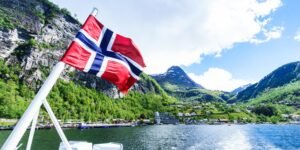

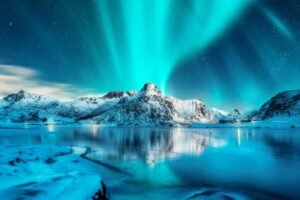
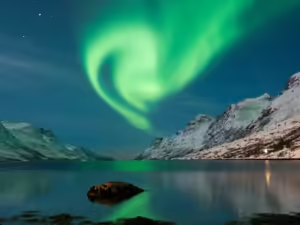
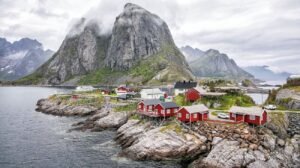
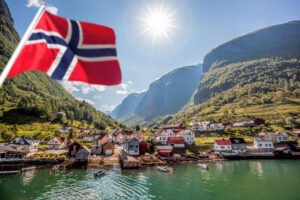
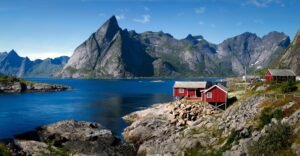
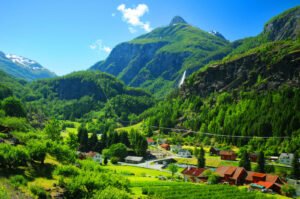
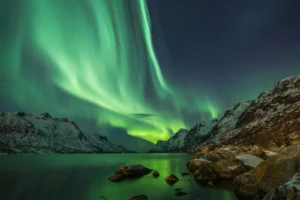
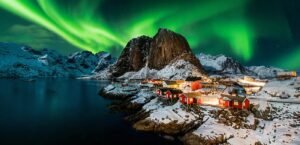
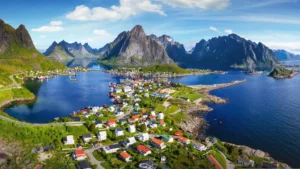
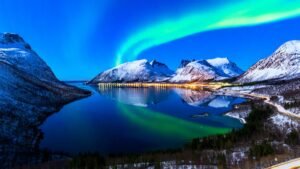
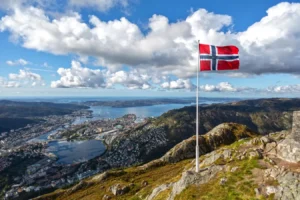
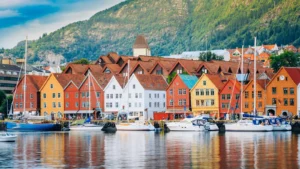
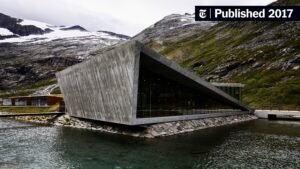
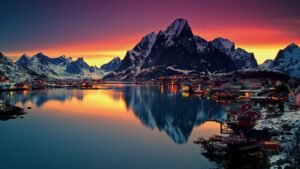
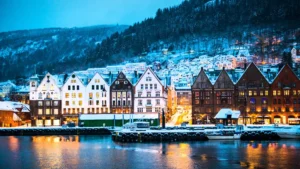
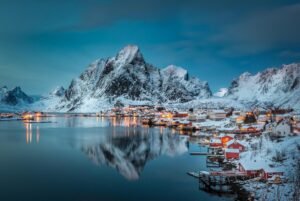
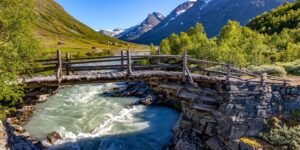
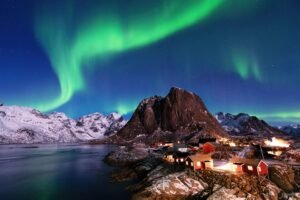
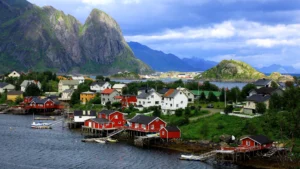
Population
| Category | Details |
|---|---|
| 26. Population (2024) | Approximately 5.5 million |
| 27. Population (1950) | 3.3 million |
| 28. Population (1900) | 2.2 million |
| 29. Projected Population (2070) | 6.5 million |
| 30. Population Density | 14 people per square kilometer |
| 31. Urban Population (%) | 83% |
| 32. Rural Population (%) | 17% |
Demographics
| Category | Details |
|---|---|
| 33. Ethnicity/Race | Norwegian (83.2%), Other European (8.3%), Asian (4.2%), African (2.5%), Other (1.8%) |
| 34. Languages | Norwegian (official), Sami, Kven |
| 35. National Language | Norwegian (Bokmål and Nynorsk) |
| 36. Religion | Christianity (Evangelical Lutheran Church of Norway) (70%), Islam (3.2%), Other (26.8%) |
| 37. Median Age | 39.3 years |
| 38. Life Expectancy | 82.5 years |
| 39. Birth Rate | 11.8 births per 1,000 people |
| 40. Death Rate | 8.0 deaths per 1,000 people |
Economic Indicators
| Category | Details |
|---|---|
| 41. Monetary Unit | Norwegian Krone (NOK) |
| 42. GDP | $482 billion (2022 est.) |
| 43. GDP per Capita (PPP) | $82,000 (2022 est.) |
| 44. Income Level | High income |
| 45. Consumer Price Inflation | 1.3% (2022 est.) |
| 46. Current Account Balance | $28 billion surplus (2022 est.) |
| 47. Exchange Rate (Per $) | 1 USD = 8.6 NOK |
| 48. Unemployment Rate | 4.1% (2022 est.) |
| 49. Stocks Inward ($ billion) | 112.6 (2022 est.) |
| 50. Real GDP Growth (%) | 3.8% (2022 est.) |
| 51. Labor Force (Million) | 2.8 million |
| 52. Major Industries | Petroleum, natural gas, shipping, aquaculture, metals |
| 53. Major Exports | Crude oil, natural gas, seafood, machinery, metals |
| 54. Major Imports | Machinery, vehicles, chemicals, food products |
| 55. Public Debt (% of GDP) | 42.6% (2022 est.) |
| 56. Tax Revenue (% of GDP) | 38.3% (2022 est.) |
| 57. Minimum Wage | 19,000 NOK per month |
| 58. Average Household Income | 575,000 NOK per year |
| 59. Inflation Rate | 1.3% (2022) |
| 60. Interest Rate | 1.0% (2022) |
| 61. Major Trade Partners | Germany, United Kingdom, Sweden, Netherlands, China |
Social Indicators
| Category | Details |
|---|---|
| 62. Literacy Rate | 99% |
| 63. Fertility Rate | 1.7 children per woman |
| 64. Infant Mortality Rate | 2.5 per 1,000 live births |
| 65. Under-5 Mortality Rate | 2.9 per 1,000 live births |
| 66. National Holidays | Constitution Day, Christmas, New Year’s Day, Easter |
| 67. Health Care System | Universal healthcare system |
| 68. Health Expenditure (% of GDP) | 10.5% (2022 est.) |
| 69. Obesity Rate | 23.1% of adults |
Social Indicators (continued)
| Category | Details |
|---|---|
| 70. Drinking Water Source | 99.7% of the population has access to clean drinking water |
| 71. Access to Sanitation | 98.9% of the population has access to improved sanitation facilities |
| 72. Average Life Satisfaction | 7.5/10 |
| 73. Major Health Issues | Cardiovascular diseases, diabetes, cancer |
Culture and Society
| Category | Details |
|---|---|
| 74. National Sport | Skiing |
| 75. National Animal | Lion |
| 76. National Flower | Purple Heather |
| 77. Famous Cuisine | Smoked Salmon, Lutefisk, Brunost (brown cheese), Reindeer Stew |
| 78. Famous Music | Edvard Grieg, Black Metal, Sami Joik |
| 79. Major Festivals | Bergen International Festival, Oslo Jazz Festival, Nobel Peace Prize Concert |
| 80. Traditional Dance | Halling, Springar |
| 81. Famous Artists | Edvard Munch, Gustav Vigeland |
| 82. Famous Writers | Henrik Ibsen, Knut Hamsun |
| 83. Cultural Influences | Scandinavian, Sami, European |
| 84. Popular Sports | Football, Handball, Ice Hockey |
| 85. Religious Practices | Christianity (Evangelical Lutheran), Islam, Secular beliefs |
Education
| Category | Details |
|---|---|
| 86. Best Public University | University of Oslo |
| 87. Best Private University | BI Norwegian Business School |
| 88. Education Expenditure (% of GDP) | 7.6% (2022 est.) |
| 89. Literacy Rate | 99% |
| 90. Primary School Enrollment | 99% |
| 91. Secondary School Enrollment | 94% |
| 92. Higher Education Enrollment | 75% |
| 93. Major Fields of Study | Engineering, Medicine, Business, Social Sciences |
| 94. Number of Universities | 27 |
| 95. International Students | 30,000 |
| 96. Graduation Rate | 90% (high school) |
Environment
| Category | Details |
|---|---|
| 97. Pollution Levels | Low, with strict environmental regulations |
| 98. Forest Coverage | 38% of total land area |
| 99. Protected Areas | 17% of land area protected |
| 100. Renewable Energy Use | 98% of total energy consumption (2022) |
| 101. Endangered Species | Arctic Fox, Puffin |
| 102. National Parks | Jotunheimen National Park, Hardangervidda National Park |
| 103. Environmental Policies | Focus on renewable energy, biodiversity conservation |
International Standing
| Category | Details |
|---|---|
| 104. Military Strength | Moderate |
| 105. Country Rank | 1st in Human Development Index (2022) |
| 106. Happiness Rank | 6th (World Happiness Report, 2022) |
| 107. Passport Rank | 7th (Henley Passport Index, 2022) |
| 108. Tourism Rank | 44th (UNWTO Tourism Ranking, 2019) |
| 109. Global Economy Rank | 32nd (World Bank, 2022) |
| 110. Science and Technology Rank | 17th (Global Innovation Index, 2021) |
History of Norway
Norway has a rich history that dates back to the Viking Age, when Norse explorers, traders, and warriors dominated the seas and lands of Northern Europe from the late 8th to early 11th centuries. The unification of Norway is traditionally dated to 872 AD with King Harald Fairhair.
In the medieval period, Norway became part of the Kalmar Union with Denmark and Sweden, later falling under Danish rule in 1537. The Napoleonic Wars led to the Treaty of Kiel in 1814, which transferred Norway from Danish to Swedish rule. Norway declared independence in 1814 but entered into a union with Sweden, which lasted until 1905 when Norway peacefully gained full independence.
The early 20th century saw Norway establishing itself as a sovereign nation, and during World War II, Norway was occupied by Nazi Germany from 1940 to 1945. Post-war Norway became a founding member of the United Nations and NATO, fostering a policy of neutrality and international cooperation.
Norway discovered significant oil and natural gas reserves in the North Sea in the late 1960s, transforming its economy and contributing to a high standard of living. Today, Norway is known for its progressive policies, commitment to human rights, and efforts in environmental sustainability.
The Flag of Norway
The flag of Norway features a red field with a blue cross outlined in white that extends to the edges of the flag. The vertical part of the cross is shifted towards the hoist side.
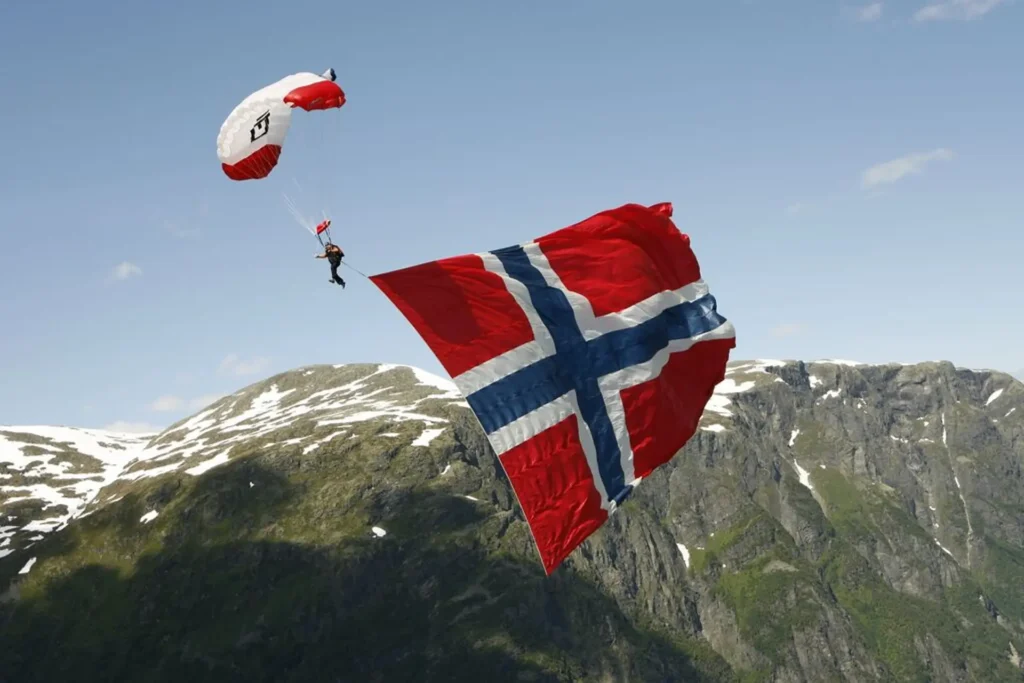
- Red: Represents courage and strength.
- White: Symbolizes peace and honesty.
- Blue: Reflects the country’s association with the sea and its maritime heritage.
The flag’s design, adopted on July 17, 1821, is influenced by the flags of Denmark and Sweden, symbolizing Norway’s historical ties with these countries. The cross design is a common symbol in Scandinavian flags, known as the Nordic Cross, representing Christianity.
References
- “Norway.” Encyclopædia Britannica. britannica.com
- “History of Norway.” History.com. history.com
- “The Flag of Norway.” CIA World Factbook. cia.gov
- “Norwegian Economy.” World Bank. worldbank.org
- “UNESCO World Heritage Sites in Norway.” UNESCO. unesco.org
Top 10 Hunting Resorts in Asia
Asia offers a unique blend of hunting experiences, from the rugged mountains to dense forests,…
Top 10 Cheapest Hunting Destinations in the World
Hunting can be an expensive hobby, but there are several destinations around the world where…
Top 10 Most Expensive and Luxury Hunting Resorts in the World
For those seeking the ultimate luxury hunting experience, these destinations offer world-class amenities, exclusive game,…
Top 10 Most Expensive and Luxury Destinations in the World
Experience the Pinnacle of Opulence at These Luxury Travel Destinations For those seeking the epitome…
Top 10 Historical Reserves in the World
Explore the World’s Most Fascinating Historical Reserves Visiting historical reserves offers a unique glimpse into…
Top 10 Cheapest Travel Destinations in 2024
Explore These Budget-Friendly Cities Around the World Traveling on a budget doesn’t mean you have…
